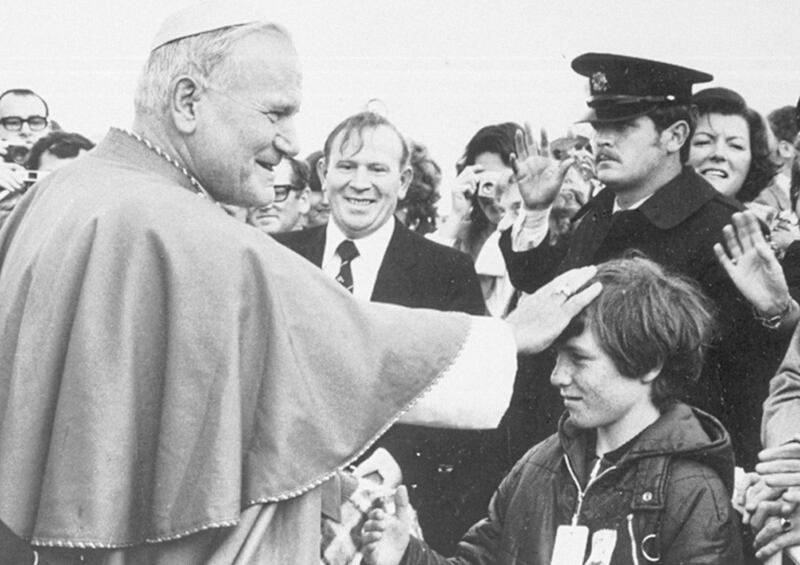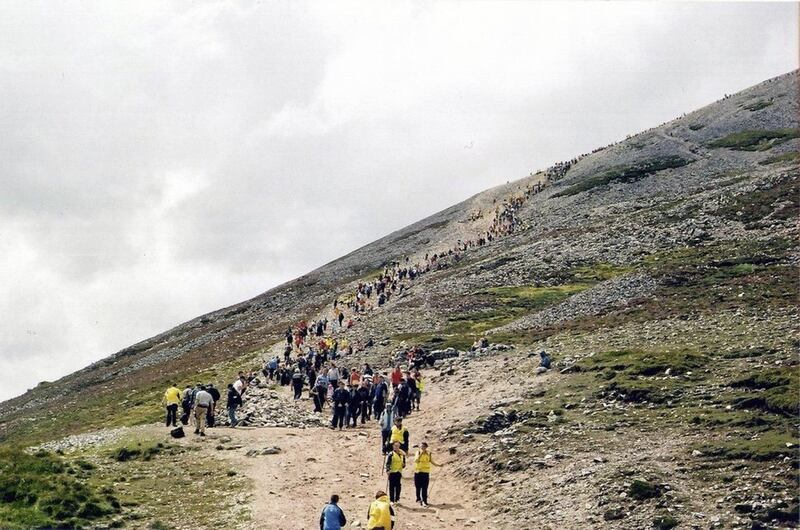DURING the 1960s, the authoritarian monopoly of the Irish Church in the social sphere began to give way to its opposite: a widespread desire to remove the Church from such a position of influence.
Many people - particularly bishops and even scholars - had not been strident in their discernment of what was taking place.
The roots of secularisation in Irish culture were not set in a sort of Kulturkampf. It would be hard to identify a list of historical leaders of an anti-Church movement in Ireland.
The situation was more that of a series of individual winds of change which, almost unknown to most, came together to bring change, while much of daily life continued outwardly unchanged.
There are no structured organic links between Church and State on a political level, except regarding education.
There are no concordats or other broad legally-binding agreements between the Holy See and common law countries.
Ireland has a common law juridical culture but it also has a constitution in which the rights of the individual are strongly protected.
These rights would almost always be considered in court as superior to any arrangement or agreement between Church and State.
The separation of Church and State is not a hostile one, but it could turn into one and there is a growing number of vocal supporters of a much more hostile relationship.
Irish Catholic young people are among the most catechised and least evangelised in Europe
Alongside hostility to the Church one can identify more integralist elements within the Church who see a Christian presence in a pluralist culture purely in terms of a negative culture war.
Overall, the political relationship between Church and State in Ireland today is one of prudent distance.
Many in Ireland and overseas were surprised by the result of the referendum on same-sex marriage.
What is worthy of note is that every single political party in Ireland supported the change of status. The vote was not about doctrine.
It was, however, not just about personal sympathy with gay and lesbian people and their families, but about a conviction that gay and lesbian people should be permitted in civil law to have their stable loving relationships recognised in marriage.
How and when did the overall religious culture of Ireland begin change?

I remember on my appointment to Dublin, Pope John Paul II asked me: "How it is that secularisation came to Ireland so quickly?"
My answer to that question was quite simple: "Your Holiness is wrong" - though my Vatican training did not allow me to express myself quite in those exact words.
The Pope was wrong. Secularisation, whatever that means exactly, had been on the Irish radar screen for many years.
It was not all negative but it was not an overnight wonder. It was there, but not fully recognised.
It was there but the answer of the Irish Church was for far too long to keep the same show on the road, not noticing that there were problems with the show and that the road was changing.
Ireland is today undergoing a further phase of revolution of its religious culture.
Many outside of Ireland are surprised to discover that there are parishes in Dublin where the presence at Sunday Mass is some 5 per cent of the Catholic population and, in some cases, even below 2 per cent.
On any particular Sunday about 18 per cent of the Catholic population in the Archdiocese of Dublin attends Mass.
That figure may be higher in some other parts of Ireland, but it is certainly not an isolated situation.
Statistics about Mass attendance, most significantly, do not examine the age of those attending.
The new national census which was carried out just over a year ago, showed a very large percentage of the population ticking the 'Catholic' box, but that percentage hides the range of difference about what 'Catholic' may mean even within an individual family and among generations.
The age group 20-39 accounts for 28 per cent of the general population but 45 per cent of those with 'no religion' fall into this age bracket
While Ireland remains a predominantly Catholic country, the percentage of the population who identified as Catholic has fallen sharply from 84.2 per cent in 2011 to 78.3 per cent in 2016.
Significantly, the number of those who registered as having 'no religion' grew by 73.6 per cent, representing almost 10 per cent of the population.
The census showed that Catholicism was the largest religion, followed now by 'no religion', followed by Anglicanism and, in fourth place, by Islam.
The precise make-up of the grouping who registered as no religion is hard to break down.
A substantial portion belonged to immigrant communities, but the most striking factor is the fact that the 'no religion' category was highest in the age group 20 to 39, the group with children entering school life and the group naturally most active in the formation of political culture for the future.
The age group 20-39 accounts for 28 per cent of the general population but 45 per cent of those with 'no religion' fall into this age bracket.
Most certainly, there are still many vestiges of popular Catholic culture. The Marian Shrine at Knock is one of the most visited tourist sites in Ireland - closely following the Guinness Brewery.
Secularisation was there but the answer of the Irish Church was for far too long to keep the same show on the road, not noticing that there were problems with the show and that the road was changing
Every year around 20,000 people - many of them young people - climb Croagh Patrick, a difficult mountain, in a penitential pilgrimage in honour of St Patrick.
There is a growing number of youth movements and initiatives of faith formation for young people.
Numbers are small but that does not mean that they may not be the signs of new beginnings.

That said, it must be repeated that the road of Irish Catholicism had been relentlessly changing for some time.
In the mid-1960s I had a professor of sociology who began his opening lecture to seminarians by affirming that "Catholicism is a minority culture in Ireland".
Our reaction was that this man was telling a joke to provoke us. However, he stuck to his ground, showing how many of the forces influencing Irish culture were already coming from outside the country.
You had the curious situation that Irish newspapers were more expensive than imported British newspapers.
Most of the programmes transmitted by Irish television were produced abroad and most families in Dublin at least were also able to watch British television.
Despite censorship, Ireland was open to art and theatre and literature from any part of the world.
Ireland has for a long time no longer been a protected island of safe Catholicism.
The Pope was wrong. Secularisation, whatever that means exactly, had been on the Irish radar screen for many years
Irish art and literature has, in any case, traditionally had within it a strong anti-clerical strain.
For decades, Ireland has been becoming one of the most open economies in the world and that economic openness inevitably was to have cultural consequences.
In general, these consequences were positive and openness was one of the vital - if risky - elements in Ireland's economic transformation.
But Ireland was becoming ever more open culturally. Young Irish people travel and despite most of them attending Catholic schools for 12 years or more, they are as secularised as the young people of any European nation.
Irish Catholic young people are among the most catechised and least evangelised in Europe.
Yet I must clearly state that young Irish people are idealistic and generous and tolerant, but they find it hard to explicitly root that generosity in the type of religious education that they have received.
My sociology professor of the mid-1960s did not apply his analysis to the state of the Irish Church itself.
Then, the effects of Vatican II were beginning to affect the Irish Church and were receiving a warm welcome.
The conformist Ireland changed very rapidly and with few tears, despite the fact that the conformism of the earlier era had not been without substantial support.
- Dr Diarmuid Martin is Archbishop of Dublin. Abridged from a major address on 'The Challenge for the Church in the 21st Century' given in the Diocese of Wurzburg in Germany.
- Next week: Rethinking the Catholic nature of Catholic schools and why the Irish Church needs to avoid wasting time and resources maintaining monuments and move towards ensuring that every member becomes a missionary disciple of Jesus.








